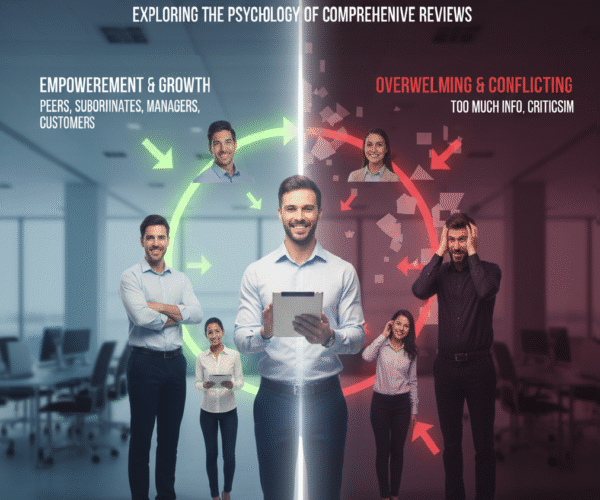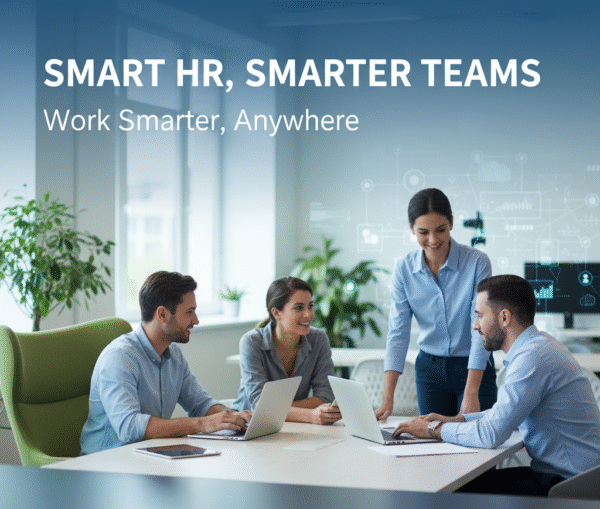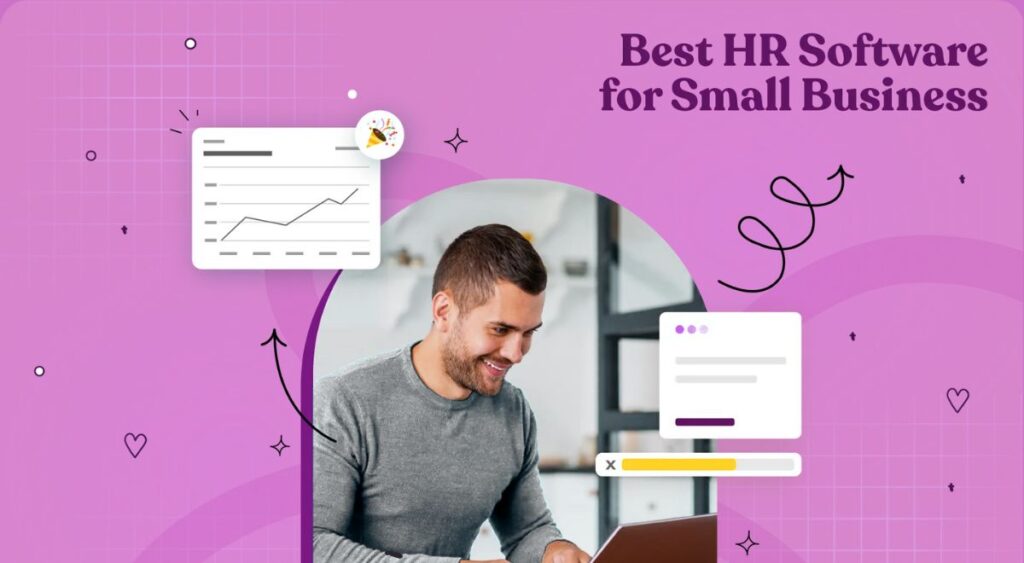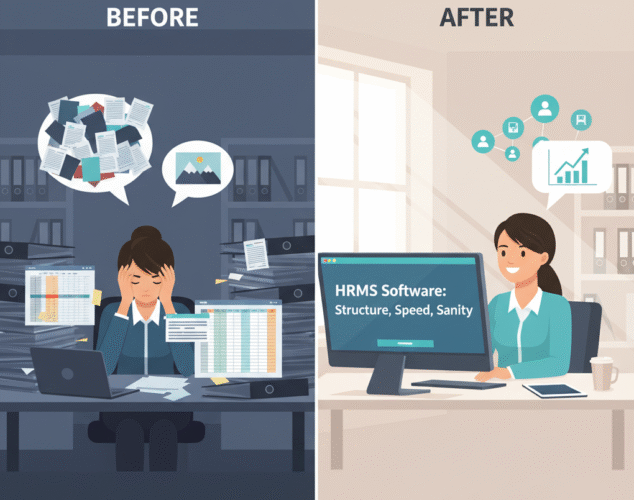Oracle HRMS Vs Others: Who Wins the HR Tech Battle in 2025?

Oracle HRMS Vs Others: You know how hard it is to choose the right HR software if you’ve ever tried to do it. With Oracle HRMS, Workday, SAP SuccessFactors, ADP, and BambooHR, each of these platforms promises to make your HR life easier. But when you dig a little deeper, it’s not so much about the features anymore, but rather about what truly works in real life. In this article, we will take a closer look at Oracle HRMS and others to find out who really wins the HR tech battle and whether Oracle’s long-standing reputation still holds up in today’s fast-changing workplace. Understanding Oracle HRMS in Today’s HR Landscape Oracle Human Resource Management System (HRMS) is a part of the Oracle E-Business Suite and is designed to encompass the entire employee lifecycle from hiring to retirement. Its strongest point is integration. It connects HR with finance, supply chain, and customer management, providing a unified overview of business processes. For organisations already employing Oracle products worldwide, it naturally appears as the next step. But along with that comes sophistication. Oracle HCM is known for depth of function and unlimited customization, but sometimes it is just too much. That’s where cloud platforms today have stepped in, trying to provide something simpler, faster, and more enjoyable. Oracle HRMS vs Workday: Depth or Delight When Workday is pitted against Oracle HRMS, it’s like matching an experienced heavyweight with a clever young challenger. Oracle was built for big data companies. Workday was cloud-conceived, engineered by the consumer. Workday’s biggest success is how easy it is. It’s graphical, intuitive, and accessible from any device, so it’s appealing for teams who want a new-but-familiar tool. Oracle HRMS, by contrast, is still the champion when it comes to complexity and breadth. Multinational corporations with sophisticated payroll infrastructures or global compliance requirements appreciate more control and more precision in Oracle. In short, Workday is a master of user experience, while Oracle HRMS stands alone for its ability to handle the toughest HR workloads without breaking a sweat. Oracle HRMS vs SAP SuccessFactors: Two Giants, Different Strengths Oracle HRMS vs SAP SuccessFactors is an interesting comparison because both are enterprise-level software leading the international HR market. SuccessFactors is deeply talent-focused it is about engagement, learning, and performance. It’s people-centric, structured, and extensively integrated with SAP’s massive business network. Oracle, however, appears more comprehensive. It’s not just about managing people but about integrating HR with every other business function. Its customizability and scope for spreading across geography makes it ideal for multi-dimensional organizations that would want to impose order to their HR processes without sacrificing control over every step. Where SAP SuccessFactors is structured, Oracle is flexible. It’s the distinction between choosing an architecture that holds your hand versus a platform that bends to suit you. Oracle HRMS vs ADP: Scale Determines the Champion When you pit Oracle HRMS against ADP, you can practically feel the difference in client. ADP is the go-to for small and medium-sized organizations that need quick, reliable HR and payroll features with no hassle. It’s easy to set up, easy to use, and makes compliance a breeze. Oracle HRMS is in a different league. It’s meant for large, multinational companies with thousands of workers across regions where payroll, benefits, and compliance are complex and integrated. ADP wins on convenience, while Oracle wins on the ability to process global scale. So if you’re a small business, ADP might feel like a lifesaver. But if you’re managing an international workforce, Oracle HRMS is the tool that keeps everything under control. Oracle HCM vs BambooHR: Heavyweight Meets Minimalist When one compares Oracle HRMS to BambooHR, it’s like comparing a supercomputer to a sleek mobile application. BambooHR has become the darling of startups and small businesses alike, who want something intuitive and human. It boasts a simple user interface, quick setup, and shallow learning curve. Oracle HRMS, in contrast, is designed for complexity. It pays thousands of people, handles compliance in numerous countries, and brings together HR data and financial analytics. It is not as slick or fun to use as BambooHR, but it is designed to work at a bigger scale of operation. While BambooHR is around quick wins and easy collaboration, Oracle HRMS is around capability and sustainable long-term success. Both are fantastic, but they’re addressing quite different things. Why Oracle Keeps Resonating Amidst HR Tech Proliferation If you compare Oracle to the competition, what it has to stay competitive is depth and integration. It integrates HR information into all areas of the enterprise, allowing leaders to make good decisions with complete knowledge of their company. Capable of running in many countries, currencies, and compliance regimes, it is suited ideally for businesses with global operations. Another area where Oracle is especially strong is security. Enterprise-level encryption, audit controls, and compliance certifications result in it being a default choice for sectors handling sensitive information. Its analytics are also the industry’s best, powered by AI-driven tools that allow turnover trends projections, talent gaps discovery, and departmental productivity tracking. Customization is yet another massive reason Oracle continues to gain allegiance from large organizations. Whereas newer software takes a simple approach, Oracle gives organizations the freedom of developing systems according to their exact processes. It’s not plug-and-play, but once it’s implemented, it works as a great addition to the backbone of a company. Where Oracle Falls Behind Of course, there are drawbacks to Oracle HRMS. The very same abilities that make it powerful also have the capacity to make it cumbersome. Implementation is lengthy, costs can rack up extremely quickly, and groups sometimes need training so they can operate the system. Small companies or organizations with minimal IT support find that Oracle HRMS is more than they can manage. User experience is yet another area where Oracle continues to play catch-up. While Oracle HCM Cloud has come a long way, there are still some HR managers who find that it is not as intuitive as solutions like Workday or BambooHR.
360 Degree Feedback: A Game-Changer or a Headache?

360 Degree Feedback: Feedback is one of the most powerful tools in the workplace. Employees highlight strengths and help overcome weaknesses. However, the question is what kind of feedback system truly works. Traditional performance apparatus often depends on a manager’s perspective, which can be biased or limited. This is where 360-degree feedback has gained popularity. Unlike a simple top-down evaluation, 360-degree feedback collects input from Peers, subordinates, managers and even from customers. it provides a complete picture of employees’ performance. But here is the debate: why it can empower employees to grow, it can also overwhelm them with too much information, conflicting opinions or even harsh criticism. So, is 360 feedback a blessing or a burden? Let’s explore both sides in detail. What is 360 degree feedback in performance management system? Why companies love 360 feedback ? The rise of 360 feedback isn’t accidental. Arunachal industries are adopting it because it resolves several long-standing issues in performance management. This approach, when done well, creates an environment where feedback becomes part of everyday growth rather than an annual headache. The empowering side of 360-degree feedback When designed with empathy and clarity, 360-degree feedback can empower employees in powerful ways The overwhelming side of 360 feedback On the flip side, 360 degree feedback can be overwhelming if not managed well: Imagine receiving 20 pages of feedback, some praising you as a leader, but others calling you disorganised. This leads to stress and anxiety rather than growth Common mistakes companies make Many organisations adopt 360-degree feedback but fail due to a lack of proper training and understanding. Some common mistakes include. Best practices to make 360 feedback empowering To ensure 360-degree feedback is powerful rather than overwhelming, companies need to follow best practices : When companies follow these guidelines, 360 feedback becomes strategic asset rather than a burden. Real-world examples The future of 360 feedback Performance management is evolving and so is 360-degree feedback. The future may include. Integration with wellness tracking coolant linking feedback with stress levels, engagement and mental health. Conclusion So, is 360 Degree Feedback empowering or overwhelming? The answer is that it depends on how it is implemented. When done thoughtfully with training anonymity and support it empowers employees by giving them a clearer common picture of their performance, it encourages growth, collaboration and self-awareness. But when done poorly, it overwhelms employees with comforting data and criticism, often causing more harm than good. The Secret Life in balance feedback should never be about judgment; it should be about guiding growth or nations that understand this term 360-degree feedback into the culture of empowerment. In the end, feedback should be a mirror that reflects potential, not a burden that creates fear. Watch this video by @dramitlal , Dr Amit Lal to know more
Smart HR, Smarter Teams: Work Smarter, Anywhere

Smart HR, Smarter Teams: To work with remote teams is as thrilling as it is demanding. When the employees are not located in the same geographical area, it is like trying to balance multiple balls in the air at the same time, keeping everything coordinated. From managing payroll to monitoring performance, the HR managers must make sure remoteness never gets in the way of productivity or employee engagement. This is where technology comes to the rescue. The right HRMS software for remote workers can turn chaotic operations into a seamless and well-oiled system. You know the agony if you have ever tried to manage hundreds of spreadsheets, complicated workflows, or tardy communication. HRMS software consolidates all of this in one place. It consolidates staff information, streamlines routine HR tasks, and fosters an environment of openness and engagement, irrespective of how remotely distributed your collaborators are. To assist you in making the most informed decision possible, let us review the smart HRMS software solutions for remote teams that stand out today. BambooHR, Simple, Nicer, and Reliable Among the more well-known HRMS options for remote-first businesses, BambooHR has become a position of ease and convenience in HR processes. It is crafted with small and medium-sized enterprises in mind and focuses on simplicity rather than overwhelming users with excessive complexity. Remote workers like how it is cloud-based and accessible remotely. Managers enjoy its easy onboarding process, easy leave management, and secure reporting option. Even if BambooHR is not all things to all people, it provides remote teams precisely what they require to remain in order and productive without over-burdening them. Zoho People, Budget Powerhouse For businesses looking for high-end functionality without sacrificing a lot of money, Zoho People is usually the way to go. It is one of the most adaptable HRMS software available for remote employees as companies can tailor workflows as per their own requirements. Remote workers love the fact that they can utilize its mobile application to handle attendance, apply leaves, or review performance updates. Meanwhile, managers can monitor appraisals, create assessment rounds, and connect the platform to payroll modules or other third-party software. Its price tag guarantees that it is highly sought after by startups or expanding businesses that desire professional HR management without draining their pockets. Workday – Big Power for Growing Teams There are small remote teams today who desire to be big tomorrow. Workday is widely referred to as the powerhouse of HRMS because it does a lot more than conventional HR functionality. It’s an enterprise-sized solution that combines workforce planning, finance, and human resource management. Remote businesses that have implemented Workday are able to take advantage of real-time analytics, great employee engagement capabilities, and secure cloud architecture that safeguards sensitive information. It’s too much for small business, but it’s worth its weight in gold for rapidly growing teams who need a platform that can grow with them. Remote operations that extend geographically and need advanced workforce performance data are generally worth the expense. Gusto – Payroll Meets HR Payroll is one of the greatest dilemmas for remote teams when workers are not in the same region or state. Gusto addresses this problem by unifying payroll and HR into one platform. It is renowned for its capacity to automate disbursement of wages as well as tax compliance, onboarding procedures, digital document management, and employee benefits. Remote employees appreciate being able to view their pay stubs and benefits at the comfort of their fingertips, and managers appreciate the ease of not wasting time on duplicate payroll processes. For businesses that wish to maintain financial processes streamlined without compromising on essential HR features, Gusto provides the ideal balance. Rippling All-in-One Modern Platform Rippling has rapidly emerged as one of the most innovative and up-to-date HRMS tools out there for remote teams due to the way that it is capable of integrating HR, IT, and finance into a single platform. Smart HR : Remote-first businesses have more issues beyond HR, including provisioning hardware for workers or managing application access. Rippling addresses these by consolidating global payroll, compliance management, and IT automation into one platform. It allows companies to onboard staff across the globe, pay their employees at a country level, and even provision company-owned work devices remotely. For international organizations or companies that need an end-to-end solution, the efficiency of Rippling is something few other players can rival. Choosing the Right HRMS for Remote Teams Each remote team is unique, so the selection process of the proper HRMS is as much of a personal as it is technical exercise. Smart HR : Small companies that want simplicity in their lives use BambooHR, while cash-strapped startups use Zoho People. Organizations that are going to expand extremely fast in every part of the globe might prefer Workday or Rippling, whereas organizations that are going to make payroll the focal point of HR processes would prefer Gusto. The right-hand side one is dependent on team size, operation size, and how much an organization can spend on long-term HR efficacy. The Advantages of HRMS Software for Remote Teams Deploying HRMS software in a remote environment provides advantages that extend beyond workflow efficiency. It minimizes human error and paperwork, creates visibility among employees and managers, and aids in labor law compliance. It also fosters participation by making employees feel monitored, appreciated, and linked even when they are not physically present. Most significantly, it saves time and effort, enabling HR professionals to work on strategy and people, not administrative work every day. Conclusion Remote work is here to stay, and the success of distributed teams relies substantially on the systems supporting them. The best smart remote team HRMS solutions, including BambooHR, Zoho People, Workday, Gusto, and Rippling, each present a distinct solution to overcoming distance gaps. If your company cares about simplicity, cost-effectiveness, scalability, payroll accuracy, or global integration, there is a solution that can revolutionise the way your team functions. Selecting the appropriate HRMS is not merely a matter of data control; it’s
Hiring to rehiring: Top 5 Cloud-Based HRMS Solutions

Hiring to rehiring :No one likes to be bogged down with endless spreadsheets and paperwork when it comes to managing people in today’s fast-paced work environment. Organizations now seek solutions that make it easy to do everything from hiring to payroll, and cloud-based HRMS solutions have risen to the occasion to accomplish just that. These platforms eliminate the headache of HR processes and simplify life for both employees and employers. If you are looking for options to introduce efficiency and flexibility in your organization, selecting the right cloud-based HRMS can prove to be a game changer. Why Cloud-Based HRMS Matters A modern HRMS in the cloud offers anytime access, better compliance, and support for today’s hybrid workforce. Workday: A Cloud-Based HRMS with a Human Touch Bamboo HRMS: Strength in Simplicity in a Cloud HRMS Oracle HRMS / HCM Cloud: A Powerhouse Cloud-Based HRMS Solution ADP Workforce Now: A Reliable Cloud-Based HRMS for Payroll and More Zoho People: A Flexible Cloud-Based HRMS for Growing Teams Selecting the Best Cloud-Based HRMS for Your Business Conclusion Disclaimer: The contents of this article are intended to provide general guidance. Readers are advised to consider each cloud-based HRMS solution against their own business requirements and seek professional advice, if necessary. Points covered :
Why Small Businesses Need HRMS Software in 2025

Why Small Businesses Need HRMS Software in 2025: Operating a small business is like keeping too many balls in the air. Between dealing with customers, employees, and finances, there seems to be little time left for HR work. That is where HRMS software comes in. In 2025, small businesses simply cannot afford to ignore this valuable tool. What was once considered a luxury for big business, HRMS is now a standard requirement for businesses of all sizes. What is HRMS Software? HRMS is an acronym for Human Resource Management System. It’s an electronic solution that is meant to make HR processes such as payroll, attendance, recruitment, performance management, compliance, and employee data management easier. Rather than using paper records or spreadsheets, HRMS software consolidates all of these in one automated system, thereby making work within HR faster, more accurate, and less stressful. Why Small Businesses Need HRMS Software in 2025 Small companies have fewer resources to work with. In the absence of streamlined systems, HR activities can be a waste of valuable time and effort. By 2025, increasing remote working, tightened labor legislation, and the need to improve employee experiences make HRMS software a matter of survival and expansion. Saving Time and Reducing Errors Manual processing of payroll, attendance tracking, and leave requests is time-consuming, with hours consumed each week. HRMS software does these jobs automatically, reducing the workload significantly. Automation also saves the business from making errors. For small businesses, it is not only convenient to avoid errors in payroll or compliance it can save funds and save the business from penalty. Imagine spending three hours every week fixing overtime records or recalculating deductions. With HRMS, this happens in minutes. That extra time can go toward building customer relationships or planning growth strategies. Improving Employee Experience Employees today are demanding quick solutions and simple access to their data. HRMS software provides them with self-service features for downloading payslips, applying for leave, viewing attendance, or modifying personal information. This autonomy decreases frustration and increases satisfaction. A good employee experience implies higher productivity and reduced turnover, which are essential for small businesses. HRMS also assists companies in making the employee experience more personalized. Ranging from sending birthday reminders to proposing training courses, the system makes the work environment one where employees feel valued and supported. Enabling Remote and Hybrid Work Offices are never the same. Numerous companies currently work remotely or in hybrid environments. HRMS software assists in handling dispersed groups by recording online presence, checking productivity, and offering resources for communication. Several platforms also support integration with Slack, Teams, or other collaboration software so employees can manage HR activities right from their workplace. Making Recruitment Easier Recruiting the right talent is one of the most difficult tasks for small firms. HRMS software facilitates this by advertising jobs, screening resumes, scheduling interviews, and managing candidates in a single environment. It allows businesses to recruit faster, smarter, and more efficiently. Some systems even enable you to build a talent pool, so the prospects are already in place for future positions. Compliance with Legislation Labor laws and compliance regulations update on a daily basis. Small businesses can be penalized if they fail to remain current. HRMS software updates payroll, tax, and labor compliance information automatically, keeping everything timely and accurate. It works like an insurance policy against expensive errors. For instance, when computing taxes or contributions, HRMS is accurate and compliant without the necessity of manual intervention. This takes pressure off business owners who do not have an HR professional on hand. Cost-Effective Growth Most small business owners are afraid to invest in HRMS due to the cost. But in actuality, HRMS software is cost-saving. Through minimizing payroll errors, evading penalties, and enhanced efficiency, it pays for itself in the long run. It’s the same as having an extra HR manager who works 24/7 without the financial burden. Data-Driven Decision Making In 2025, data-driven decisions provide a competitive advantage to businesses. HRMS software gathers employee information and compiles it into meaningful reports. From identifying most frequent absences to monitoring performance and predicting hiring requirements, these insights enable small businesses to take proactive measures rather than reactive measures. For instance, if the employees are repeatedly working overtime, it might mean additional personnel are necessary. Rather than looking to burnout, the owners can anticipate and make wiser staffing decisions. All this information also informs companies of their high achievers who are potentially ready for promotions. Improving Communication Miscommunication occurs often in small teams where individuals handle various roles. HRMS software enhances communication by providing transparency through channels for updates, feedback, and policy adjustments. This prevents misunderstandings and keeps everyone on the same page. Some platforms even permit anonymous feedback so that workers can voice concerns with impunity. Customization for Small Businesses Contrary to traditional systems created for large businesses, current HRMS systems are specifically made for small teams. They are cost-effective, simple to install, and adaptable. Most vendors now present modular pricing packages, meaning small companies pay only for the features they really use. Whether you have a 10-member café or a 50-member startup, there is an HRMS system that is suitable for your company. Establishing a Positive Work Culture HRMS software assists in creating a clear and equitable culture of work. Proper payroll, transparent leave policy, and open communication give workers a sense of being respected and valued. Through monitoring performance and success, HRMS also assists in enabling managers to appreciate and reward well-done work in time. Proper culture minimises turnover and facilitates an easy hiring process. Security of Employee Data Employee information security is a more critical issue than ever before. Hospitals have encryption and access-limited properties in their HRMS software to safeguard confidential data. Most Hospitals’ platforms also adhere to global standards such as GDPR, which is essential for companies that deal with remote workers or international clients. The Future of Small Businesses with HRMS Software In the future, HRMS software can only become smarter. With advanced analytics and AI, it
HRMS Software That Save HR Teams from Turning Into Zombies

HRMS SOFTWARE : HR people are true heroes—they handle tantrums, calm panics, and even deal with employees who believe HR means giving happy replies on WhatsApp 24/7, but without proper tools, their work life feels like chaos; that’s why HRMS software is the real game-changer, bringing structure, speed, and sanity to their everyday battles. Day1: Motivated Day30: Drowning in Excel sheets Day90: Googling stage management Day180: Considering Himalaya retreat 🙂 A human resource management system is the magical genie that takes very boring tasks, automates them, and gives HR people some peace, maybe time to scroll Instagram, ha ha ha . Let’s meet the top five HRMS superheroes that can save your HR team from being crazy 1.Zoho People – the HR BFF Zoho people is like that friend who reminds of deadlines, sends you memes and still does your homework Cool things it does: Employee Got Busted 😂 Ravi applies for sick leave, but Zoho GPS check in shows him happily clocking in from GOA cafe wifi,HR doesn’t need Instagram to figure it out. Best for : Small businesses and starts up who wants HR to stop being Excel Clerks 2.SAP SuccessFactors – this is HR Godzilla This is not just a HRMS software But a Godzilla. It doesn’t only manage employees it rules them Cool things it does: Is this payroll… or sorcery? 1000 employee’s payroll usually takes weeks but with SAP, it’s in done hours, HR stares at screen and like, “is this payroll …or sorcery? 3.BambooHR – The HR who brings Donuts This one is a simple, sweet and user-friendly, bamboo hr is that HR who says Hey relax, we will handle this Cool things it does: Welcome to the team!! New employee joins. normally 47 forms ,3 Awkwards intros and confusion, with Bamboo HR digital welcome kit a smooth start and newbie actually smiles! Best for small and medium companies that want HR to be fun, not scary 4.Workday HCM, the genius Workday is like the topper kid in the class who knows everything answer before teacher finishes and secretly runs startup on the side. Cool things it does: HR feels like Sherlock Holmes! Employee asks for sick leave, workday in whispers to HR, Lier cheque his calendar he has trip planned. Best for: companies who want future HR with brains bigger than their office server 5.KEKA HR – The Desi Rockstar Finally, an Indian HRMS that gets Indian employees . KEKA HR is like the Bollywood hero who shows up just in time to save the day. Cool things it does: Ramesh enters office late I said traffic jams traffic jam sir and then keka system : Really? Same excuse yesterday same time same face you are busted. What if HRMS didn’t exist? Without HRMS, HR life would be: Pros and cons Zoho People SAP success factors Bamboo HR Work day HCM KEKA HR HRMS Software Best For Pros Zoho People Small businesses & startups Easy, affordable, simple SAP SuccessFactors Large/global enterprises Super powerful, global-level BambooHR Small & medium companies Friendly, smooth, simple UI Workday HCM Companies wanting data-driven HR Genius-level insights, very advanced Keka HR Indian companies (festivals, chai breaks) Perfect for Indian payroll & culture Final thoughts FAQs : Q: Can HRMS stop employees from faking sick leaves?A: Not yet, but AI is trying. Until then, stalk their Instagram. Q: Will HRMS replace HR people?A: No. HRMS does boring tasks. HR still has to handle office gossip and birthday cakes. Q: Which HRMS is best?A: Depends on your company size: Q: What does a Payroll system do?A: It ensures employees get paid on time—without Excel-induced anxiety or calculator rage. Q: Can HRMS handle remote employees?A: Yes. HRMS doesn’t care where you work, as long as you log in. Just like your boss. Q: Is HRMS only for HR people?A: Nope. Employees use it to apply leave. Managers use it to approve leave. HR uses it to judge everyone silently. Q: What’s the difference between HRMS and ERP?A: HRMS is like the HR department. ERP is the whole company. HRMS is a slice. ERP is the pizza. Q: Can Payroll be automated?A: Yes. And it should be. Because manual payroll errors = angry employees = HR’s nightmare. Q: Is HRMS expensive?A: Less than losing files, missing compliance deadlines, or paying everyone the wrong salary.

